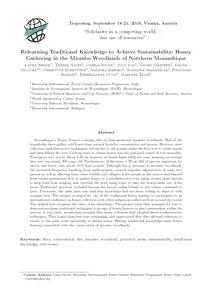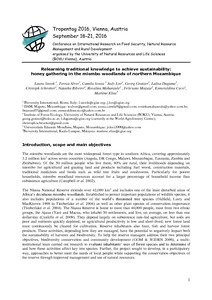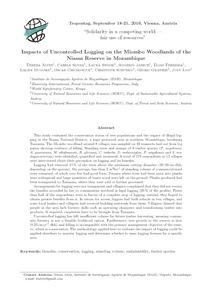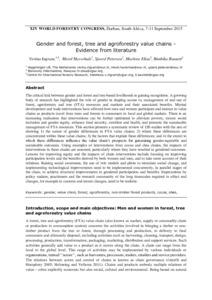Location
Instituto de Investigação Agrária de Moçambique (IIAM) é uma instituição subordinada ao Ministério da Agricultura e Segurança Alimentar e Nutricional (MASA), criada pelo Decreto 47/2004, de 27 de Outubro, do Conselho de Ministros. O IIAM congrega várias áreas de pesquisa agrária e resulta da necessidade de integração de esforços, bem como a racionalização e complementaridade de recursos e acções no tocante à pesquisa, desenvolvimento e disseminação de tecnologias agrárias em Moçambique.
Fonte: Wikipedia (d.d. November 13th 2017)
Members:
Resources
Displaying 1 - 4 of 4Relearning traditional knowledge for sustainability: honey gathering in the Miombo Woodland of Northern Mozambique
Mozambique's Niassa Reserve contains Africa's best preserved miombo woodlands. Half of the households there gather wild honey from natural hives for consumption and income. However, most collectors used destructive techniques: setting fire to the grasses under the hive tree to create smoke and then felling the tree. Cutting trees to obtain honey was the principal source of tree mortality. Trees grow very slowly, about 0.25 cm diameter at breast hight [dbh] per year, meaning an average hive tree was nearly 200 years old.
Relearning traditional knowledge for sustainability: honey gathering in the Miombo Woodland of Northern Mozambique
Mozambique's Niassa Reserve contains Africa's best preserved miombo woodlands. Half of the households there gather wild honey from natural hives for consumption and income. However, most collectors used destructive techniques: setting fire to the grasses under the hive tree to create smoke and then felling the tree. Cutting trees to obtain honey was the principal source of tree mortality. Trees grow very slowly, about 0.25 cm diameter at breast hight [dbh] per year, meaning an average hive tree was nearly 200 years old.
Impacts of uncontrolled logging on the Miombo woodlands of the Niassa reserve in Mozambique.
This study evaluated the conservation status of tree populations and the impact of illegal logging in the Niassa National Reserve, a huge protected area in northern Mozambique, bordering Tanzania. The Miombo woodland around 8 villages was sampled on 43 transects laid out from log patios showing evidence of felling. Standing trees and stumps of 8 timber species (P. angolensis, A. quanzensis, M. sthulmannii, B. africana, C. imberbe, D. melanoxylon, P. angolensis and S. madagascariensis) were identified, quantified and measured.
Gender and forest, tree and agroforestry value chains - evidence from literature
The critical link between gender and forest and tree-based livelihoods is gaining recognition. A growing





